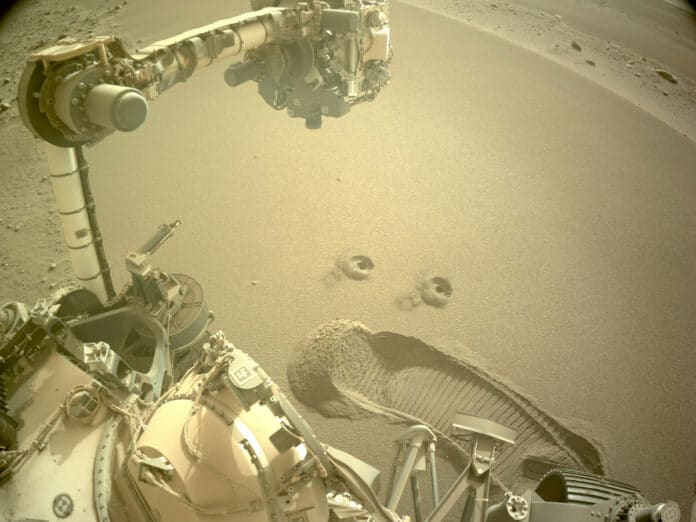To find evidence of prehistoric microbial life and to better understand the processes that formed the surface of Mars, scientists wish to analyze Martian samples with high-tech lab equipment on Earth. The majority of the samples will be made up of rock. Still, scientists are also interested in studying regolith, or broken rock and dust, not only for what it can reveal about Mars’ geological processes and environment but also help astronauts prepare for some of the difficulties they will encounter. Regolith is fascinating to scientists and engineers because it can impact everything from solar panels to spacesuits.
On December 2 and 6, NASA’s Perseverance rover snagged two new samples from the Martian surface. These samples came from a pile of wind-blown sand and dust similar to but smaller than a dune.
One of these two samples, which are currently housed in specialized metal collection tubes as part of the Mars Sample Return campaign, will be considered for deposit on the Martian surface at some point this month.
These most recent samples were obtained using a drill attached to the robotic arm of the rover, just like rock cores. But for the regolith samples, Perseverance used a drill bit that looks like a spike with small holes on one end to gather loose material.
Iona Tirona of NASA’s Jet Propulsion Laboratory in Southern California said, “Everything we learn about the size, shape, and chemistry of regolith grains helps us design and test better tools for future missions. The more data we have, the more realistic our simulants can be.”
Perseverance team member Erin Gibbons, a McGill University doctoral candidate, said, “If we have a more permanent presence on Mars, we need to know how the dust and regolith will interact with our spacecraft and habitats. Some dust grains could be as fine as cigarette smoke and get into an astronaut’s breathing apparatus.”
“We want a fuller picture of which materials would be harmful to our explorers, whether they’re human or robotic.”
Libby Hausrath of the University of Nevada, Las Vegas, one of Perseverance’s sample return scientists, said, “There are so many different materials mixed into Martian regolith. Each sample represents an integrated history of the planet’s surface.”
